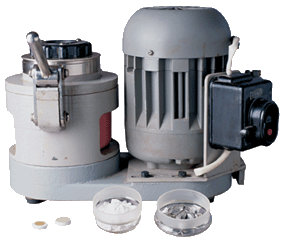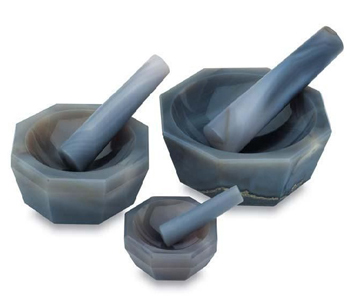Determination of Ni, Mn, Cr, ZnO, CuO, Fe2O3 , SO3, P2O5, SiO2, Al2O3, MgO, CaO in corrosive sediments
The test method provides mass content determination of Ni, Mn, Cr, ZnO, CuO, Fe2O3, SO3, P2O5, SiO2, Al2O3, MgO, CaO in treateded samples of corrosive sediments by X-Ray fluorescence method with "SPECTROSCAN MAKC" spectrometers. The test method is applied at power plants complexes, refinery and petrochemical industry.
Submit request
The sampling is fulfilled by scraping the sediments from blades, parts of pipes of boilers and other units in accordance with the local norms.
The sample material shall be dried in a drying chamber at 105°С temperature to constant mass, then the sample batch is mixed with boron acid and grinded with a disk grinder or agate mortar. The recommended dilution coefficient is from 2 to 10. If the results of analysis show that the concentration is out of the calibration range, the sample dilution coefficient should be correspondingly changed.
Analysis includes two measurements of two samples of the same sample material. The samples may be prepared the following two ways:
Filling the sample cup
Sample material is filled in a standard sample cup delivered with spectrometer. The powder is compressed till smooth flat surface is obtained at the cup edge level. The cup is covered with 5 micron thick polyethyleneterephtalate film. The film is fixed with rings included in the sample cup set.
Pressing in a boron acid cup
Boron acid cup is pressed out with a shaped punch being at least 3 mm deep. Sample material is put into the cup and pressed with a flat punch into a pellet.
The sample cup or the pellet is put into the sample holder and then into a spectrometer. Analysis is carried out automatically according to the chosen program. The program can determine all elements (oxides) listed in the test method or some of those elements by choice.
Mass content determination of all metal and metal oxides is done from one sample.
The sample material shall be dried in a drying chamber at 105°С temperature to constant mass, then the sample batch is mixed with boron acid and grinded with a disk grinder or agate mortar. The recommended dilution coefficient is from 2 to 10. If the results of analysis show that the concentration is out of the calibration range, the sample dilution coefficient should be correspondingly changed.
Analysis includes two measurements of two samples of the same sample material. The samples may be prepared the following two ways:
Filling the sample cup
Sample material is filled in a standard sample cup delivered with spectrometer. The powder is compressed till smooth flat surface is obtained at the cup edge level. The cup is covered with 5 micron thick polyethyleneterephtalate film. The film is fixed with rings included in the sample cup set.
Pressing in a boron acid cup
Boron acid cup is pressed out with a shaped punch being at least 3 mm deep. Sample material is put into the cup and pressed with a flat punch into a pellet.
The sample cup or the pellet is put into the sample holder and then into a spectrometer. Analysis is carried out automatically according to the chosen program. The program can determine all elements (oxides) listed in the test method or some of those elements by choice.
Mass content determination of all metal and metal oxides is done from one sample.
Mass content range of the elements and oxides specified in the test method in the treated samples of corrosive sediments is given in the table below:
| Determined compound | Compound mass content, % |
| ZnO | 0,25 –5,0 |
| CuO | 0,25 –5,0 |
| Ni | 0,10 – 1,0 |
| Fe2O3 | 3,5– 25 |
| Mn | 0,25 – 2,0 |
| Cr | 0,10 – 1,0 |
| SO3 | 0,5 – 5,0 |
| P2O5 | 0,5 –5,0 |
| SiO2 | 0,5 –5,0 |
| Al2O3 | 1,0– 5,0 |
| MgO | 1,0 –5,0 |
| CaO | 0,50 – 5,0 |
| Laboratory grinder LDI-65
desk top laboratory grinder. The grinder is used for uniform grinding of sample material. The grinder is recommended for powder sample preparation for XRFA. It provides required particle size, and uniform grinding. The grinding plates do not introduce additional elements into the sample material, therefore does not add errors to analysis. |  |
| Hydraulic laboratory press PGR - 10
desk top manually operated hydraulic press is recommended for powder sample pressing to improve analysis results. There are two modifications differ in available stresses – either from 0 to 10 ton or from 0 to 20 ton. The modification is chosen dependent on the material for analysis and customer analytical task. The delivery set includes molders of various diameters dependent on the analytical task. | ПГР - 10
|
|
Agate mortar
The mortar is used for manual suspension and powder grinding, as well as for mixing small portions of substances used in scientific research. |  |
